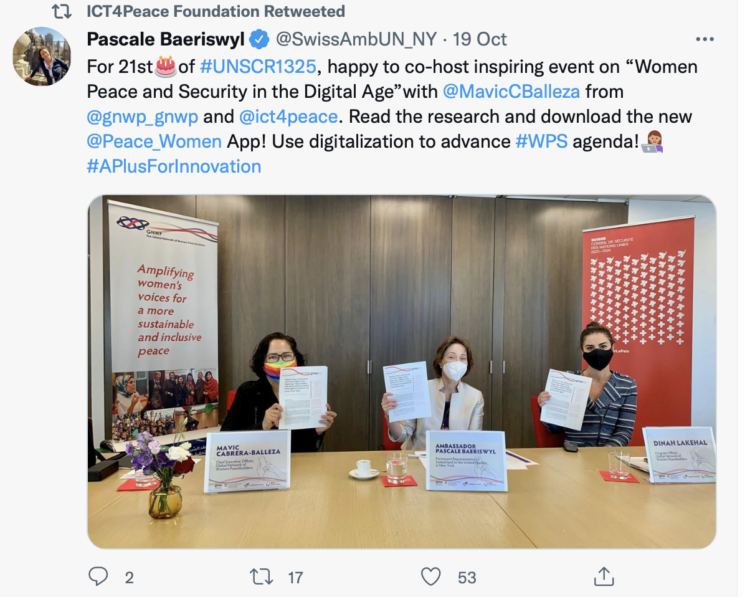On the occasion of the 21st Anniversary of UN Security Council Resolution 1325, the Global Network of Women Peacebuilders (GNWP), the ICT4Peace Foundation, the Women’s International League for Peace and Freedom and the Permanent Mission of Switzerland to the UN in New York organised an international panel with practitioners, policy makers and ICT experts, to inter alia present:
The Concept Note with the findings and recommendations from the research on the linkages between ICTs, human rights, and the Women Peace and Security (WPS) agenda conducted by GNWP and ICT4Peace.


The Concept Note can be found here
The Key Findings of the report addressed the following questions:
- What ICT tools do women peacebuilders use?
- How do women peacebuilders use ICTs?
- How do normative frameworks on ICTs integrate gender and women’s perspectives?
Recommendations to policy-makers, ICT companies, and other stakeholders included inter alia the following areas:
- Significantly increase investment in universal and affordable access to the Internet, in line with target 9.C of the Sustainable Development Goals, and take proactive measures to guarantee internet access for women and girls, in particular women and girls refugees, internally displaced persons, and those living in conflict-affected and rural areas.
- Promote and facilitate inclusive design and development of ICT products and services, including by encouraging and supporting diverse women and girls to pursue careers in the ICT sector and by conducting consultations with diverse groups of end-users of ICT products, including women and girls living in conflict-affected communities.
- Strengthen the protection of women’s rights in the under-regulated online space, by adopting concrete laws, policies and protocols to ensure their safety, in line with existing legal frameworks to protect women’s and girls’ rights.
- Invest in programs to strengthen the capacities of women and youth to access and effectively use online spaces, especially given the online nature of the new normal in the context of COVID-19.
